When it comes to garden tools, there’s one thing for sure: they get dirty. In fact, many of them can become downright caked with dirt and mud, which is not only unsightly but can also lead to rusting and other damage. Fortunately, cleaning garden tools is a relatively easy task that can be done in just a few minutes using the right methods and products. In this guide, we’ll walk you through the process step-by-step so that your tools will be clean and ready to use for the next gardening season!
Why You Should Clean Garden Tools
Garden tools are one of the most important things that you need to have in order to make your gardening experience more enjoyable. They can help you with a lot of tasks such as weeding, planting, and even watering your plants. In addition, using the right garden tool can also help extend the life of your plants.
There are a lot of different garden tools available in the market today and each one has its own advantages and disadvantages. It is important that you choose the right garden tool for your needs so that you can get the most out of it.
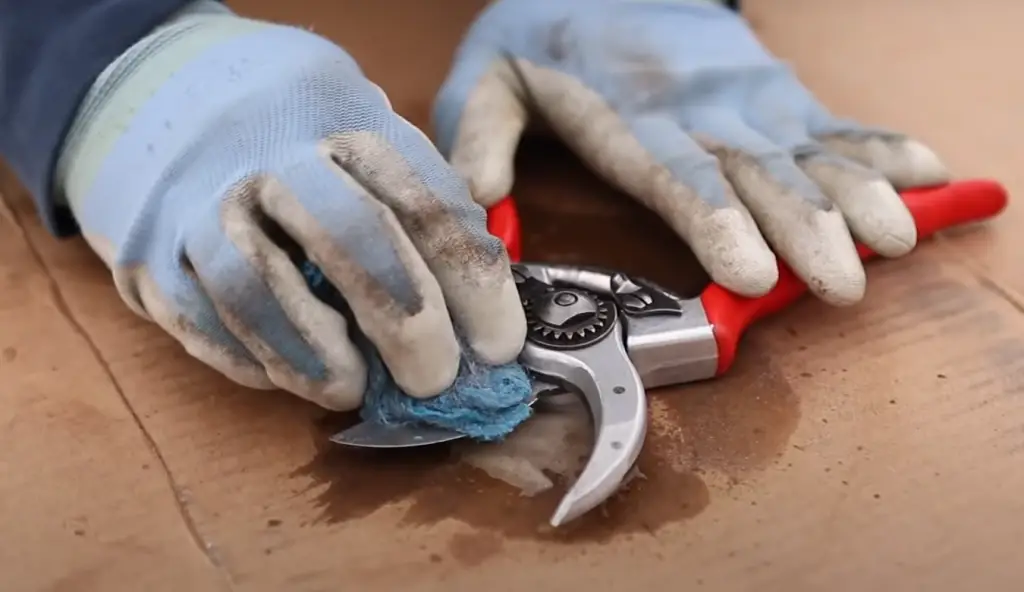
Over time, garden tools can become dull and rusty. This is why it is important to clean them on a regular basis. Cleaning your garden tools will not only help them last longer but it will also prevent them from spreading diseases to your plants.
How Often Should You Clean Garden Tools?
Ideally, you should clean your garden tools after every use. However, we understand that this is not always possible. If you cannot clean them after every use, then make sure to do it at least once a month. This will help ensure that your garden tools are always in top condition.
Cleaning your garden tools is not a difficult task and it can be done quickly if you have the right supplies. Below are some tips on how you can clean your garden tools. [1]
Cleaning Garden Tools
Now that you know how important it is to clean garden tools, we will provide you with a detailed step-by-step guide on how you can do it. We will discuss everything from what supplies you will need to other factors you need to consider.
What Will You Need
There is a short list of supplies you will need in order to clean your garden tools. This includes:
- A bucket
- A hose
- Some soap
- A brush
- A towel
You might also need some additional supplies depending on the state of your garden tools. If they are particularly dirty or rusty, then you might need to use a wire brush or sandpaper. We will discuss this in more detail later on.
Once you have gathered all of the necessary supplies, you can start cleaning your garden tools. [1]
Wash the soil away
Chances are, your garden tools are going to be covered in dirt and soil after every use. The first step is to remove all the dirt and soil that is on the tool. You can do this by using a hose or a bucket of water. If you are using a hose, make sure that the water pressure is not too high as it can damage the tool. Once all the dirt and soil have been removed, you can proceed to the next step.
Simply fill up a bucket with water. Let the tool soak in the soapy water for at least 30 minutes before proceeding to the next step. Then, use a brush to scrub away all the dirt and soil from your garden tools.Once you have removed all the dirt and soil, rinse your garden tools off with clean water.
Soak in Soapy Water
The next step is to soak your garden tools in soapy water, again! This will help remove any remaining dirt and grime that is on the tool. You can use any type of soap that you have around the house. We recommend using dish soap as it is designed to break down grease and dirt.

Let your garden tools soak in the soapy water for at least an hour. This will give the soap time to work its magic and break down all the dirt and grime. You should now see a significant difference in how clean your garden tools are! If they are still not as clean as you would like.
Rinse and Dry the Tools
Again, use clean water to rinse off your garden tools. Make sure that you remove all the soap suds before proceeding to the next step. We recommend you use a microfiber cloth as it will help remove any remaining water from your garden tools.
Once your garden tools are rinsed, dry them off with a clean towel. You can also let your garden tools air dry if you do not have a towel . Just make sure that they are completely dry before storing them away. [1],[2],[3]
Inspect for and Remove Rust
After your garden tools are clean, inspect them for any rust. Rust can cause a lot of damage to your tools, making them unusable and it can also spread to other parts of your garden. If you notice any rust on your tools, make sure to remove it immediately.
You can remove rust by using a wire brush or sandpaper. For more difficult cases, you may need to use a chemical rust remover. Once you have removed the rust, make sure to apply a coat of paint or varnish to prevent it from coming back.
Of course, you can minimize the chances of rust by storing your garden tools in a dry place. If you live in an area with high humidity, then consider using a rust-preventative spray on your tools.
Once you have removed all the rust from your garden tools, make sure to apply a coat of WD-40 or another type of oil. This will help prevent the tool from rusting in the future.[1],[2],[3]
Remove Gooey Sap
If you have ever stored your garden tools in the garage or shed, then chances are they have come into contact with sap. Sap can be very difficult to remove and it can cause damage to your tools if it is not removed properly.
It is sticky and can be difficult to remove. If you have gooey sap on your garden tools, you will need to clean it off before using the tools again.To remove sap, we recommend using a putty knife or a towel dipped in turpentine. Gently scrape away the sap until it is completely removed . If you find that the sap is still sticky, then you can use a solvent such as mineral spirits to remove it. However, in most cases soaking the tool again will make it easier to remove the sap.
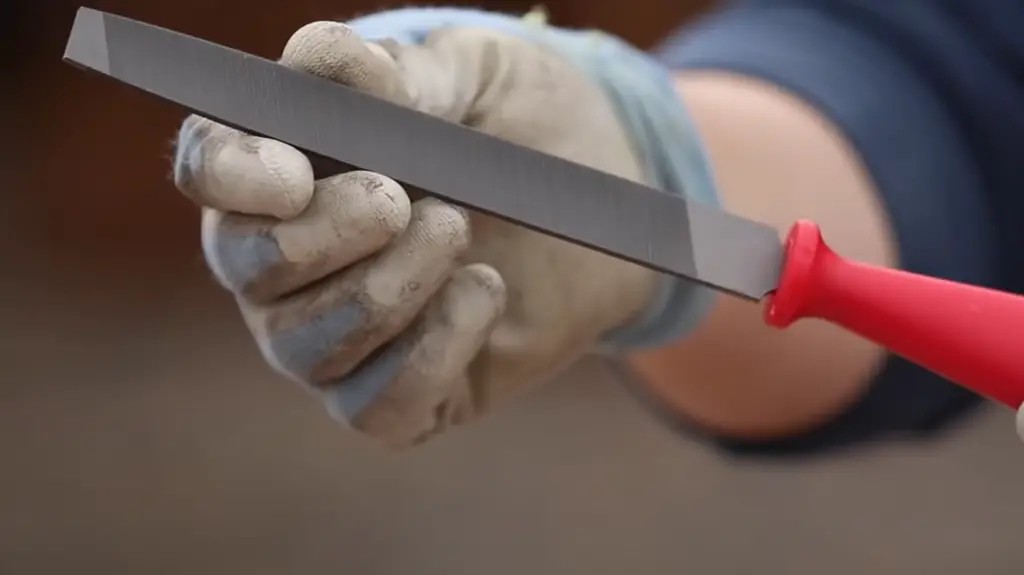
Once you have removed all the sap, make sure to rinse off your tool with clean water. You may also need to use a brush to remove any remaining sap. [1]
Disinfect Tools
Once you have removed the sap, you will need to disinfect the tool. Disinfecting garden tools is important to prevent the spread of disease. Both bleach or rubbing alcohol are effective disinfectants. You can also use a solution of one part bleach to nine parts water. To disinfect your tools, soak them in the solution for at least five minutes. Rinse them well with clean water and dry them before using them again. [1],[2],[3]
How to Take Care of Garden Tools
Now that you know how to clean garden tools, you need to learn how to take care of them. Cleaning is only part of the picture when it comes to keeping your tools in good shape. Properly caring for your garden tools will extend their life and make them easier to use.
Sharpen them regularly
Garden tools need to be sharpened regularly. If your garden tools are dull, they can be more difficult to use and can cause damage to your plants. A sharp blade is key for making clean cuts in any gardener’s experience. We will show you how to sharpen your garden tools so that they work like new again!
Before you proceed with sharpening however, you will need to apply a WD-40 or a similar lubricant to all the moving parts of your garden tools. This will help to protect them from rust and corrosion.
WD-40 is a lubricant, penetrant and water displacement spray. It’s great for WD-40 is a lubricant, penetrant and water displacement spray. It’s great for cleaning garden tools because it can help remove rust, dirt and grime. WD-40 can also help protect your tools from corrosion by creating a barrier against moisture.
Wipe away the dirt, grime and rust with a clean cloth. Rinse the area with clean water to remove any residue.There are a few different ways that you can sharpen your garden tools. You can use a honing stone, a power drill, or a file. Whichever method you choose, make sure to read the instructions carefully before getting started.
A honing stone is the most common way to sharpen garden tools. First, wet the stone with water or oil. Then, hold the tool at a 20-degree angle to the stone and sharpen the blade in a back-and-forth motion. You’ll need to do this for both sides of the blade.
If you’re using a power drill, you’ll want to attach a sharpening stone to the drill bit. Again, wet the stone with water or oil. Then, put the drill on low speed and hold the tool at a 20-degree angle to the stone. Sharpen the blade in a back-and-forth motion. You’ll need to do this for both sides of the blade.
A file is another option for sharpening garden tools. First, find a file that’s slightly smaller than the width of your tool’s blade. Second, hold the file at a 20-degree angle to the blade and sharpen in a back-and-forth motion. You’ll need to do this for both sides of the blade.
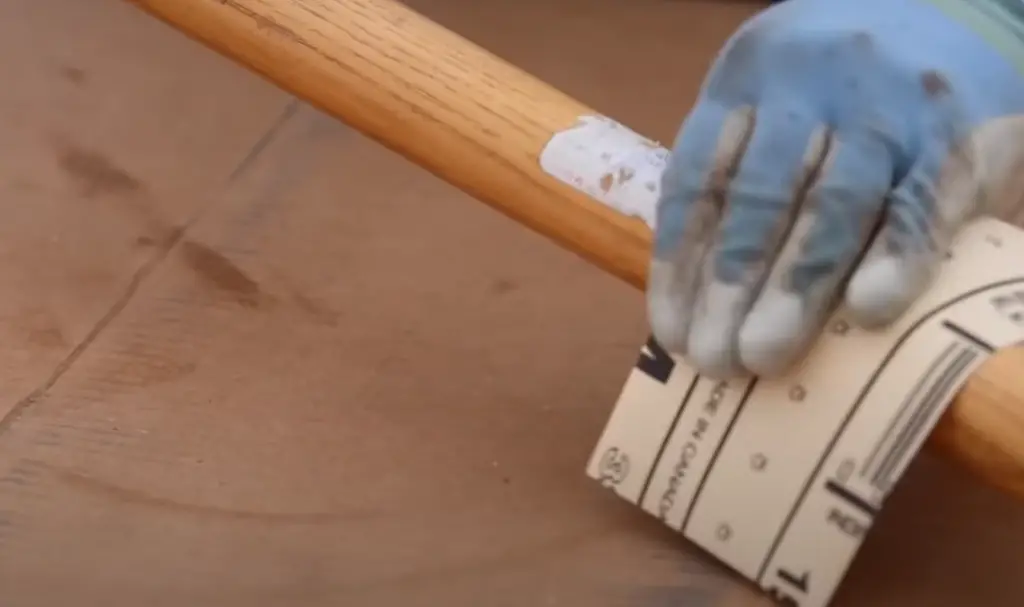
Once you’ve sharpened your garden tools, it’s important to clean them. This will remove any dirt or debris that could dull the blades. To clean your tools, use a brush and soapy water. Rinse the tools with clean water and dry them before storing. [1],[4]
Oil moving components
Tools like pruners, shears, and loppers all have moving components that need to be oiled periodically.
Oiling moving components is easy, simply apply a drop or two of machine oil or WD-40 to each joint. Wipe away any excess oil with a clean cloth and reassemble your tool. For the better result, you may want to rub a little bit into the moving part to ensure the oil gets into all nooks and crannies.
It’s also a good idea to oil garden tools after you use them, especially if you live in a humid climate. This will help prevent rust and keep your tools working like new for years to come. Thanks for reading! We hope this guide was helpful. If you have any questions or comments, please feel free to reach out to us at any time. Until next time, happy gardening!
If you don’t oil the moving parts of your garden tools, they will eventually rust and seize up. By taking a few minutes to oil them on a regular basis, you can extend the life of your tools and keep them working like new. [1]
Oil and sand wooden handles
Garden tools usually have handles made of wood. Over time, these handles can become dry, cracked, and splintered. Not only does this make the tools difficult to use, but it can also be dangerous.
This will help protect the wood from moisture and prevent the handles from becoming damaged.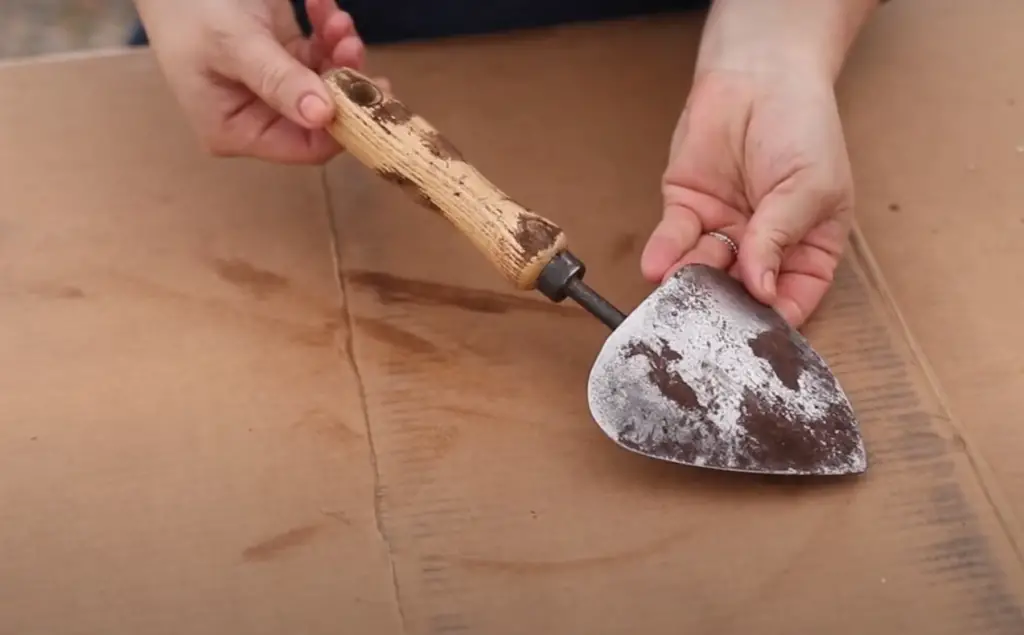
Here’s a step-by-step guide on how to sand and oil garden tool handles:
- Step One: Start by sanding down the handle with medium-grit sandpaper. Be sure toSand in the direction of the grain to avoid damaging the wood.
- Step Two: Once you’ve finished sanding, wipe down the handle with a damp cloth to remove any dust.
- Step Three: Apply a generous amount of oil to the handle, using a clean rag. You can use any type of vegetable oil, such as linseed oil.
- Step Four: Allow the oil to soak into the wood for at least an hour before wiping off any excess.
- Step Five: Repeat this process on a monthly basis, or as needed, to keep your garden tool handles in good condition. Thanks for reading! I hope this guide was helpful. [1]
Store your tools properly
One of the best ways to take care of your garden tools is to store them properly. This means keeping them clean and dry when you’re not using them.
If you have a shed, this is the ideal place to store your garden tools. But if you don’t have a shed, you can also keep your tools in the garage or in a storage closet inside your house. Just make sure they’re stored someplace where they won’t get wet or dirty.
It’s also important to clean garden tools before you store them for the winter. This will help prevent rust and other damage that can occur during storage.
Another important part of storing your garden tools properly is to put them away when you’re done using them. This seems like a no-brainer, but it’s easy to leave your tools lying around in the yard after you’ve finished working with them. [1],[2],[3]
FAQ
What should I use to clean garden tools?
The best way to clean garden tools is to use a putty knife and an old toothbrush. You can also use a wire brush, but be careful not to damage the metal. If your tools are extra dirty, you can soak them in a bucket of soapy water for a few hours before scrubbing them clean. For rust spots, you can rub them with steel wool or sandpaper. If the rust is really bad, you might need to replace the tool.
Can you use WD-40 to clean garden tools?
Yes, you can use WD-40 to clean garden tools. However, it is important to note that WD-40 is a petroleum-based product and should be used in well-ventilated areas. In addition, WD-40 should not be used on painted surfaces or on electrical components.
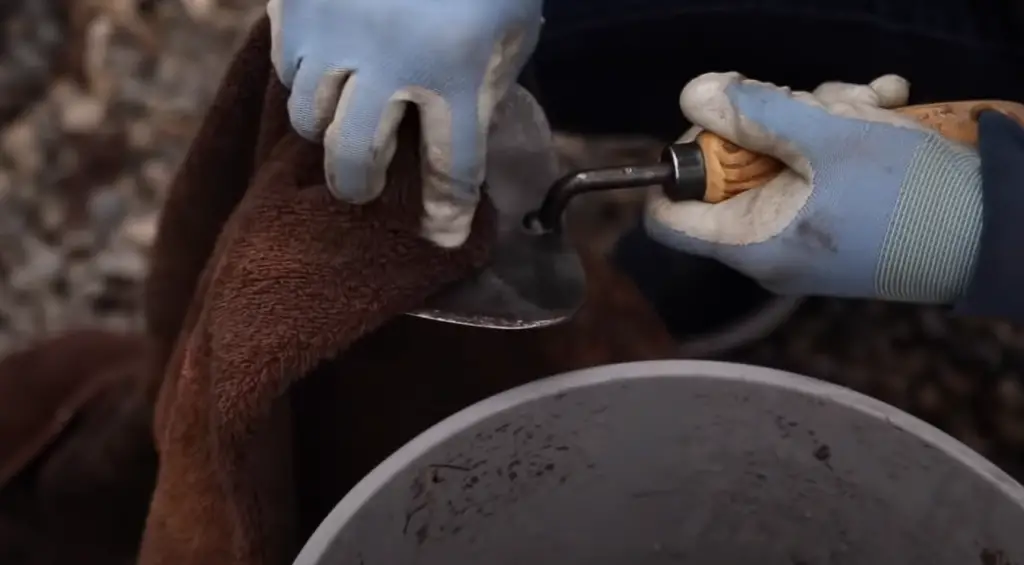
To clean garden tools with WD-40, simply spray theWD-40 onto the tool and wipe it off with a clean cloth. For best results, let theWD-40 sit on the surface for a few minutes before wiping it off.
How do you clean garden shears?
To clean garden shears, first remove any dirt or debris by wiping them down with a cloth. Next, disinfect the blades by soaking them in a solution of one part bleach to ten parts water for five minutes. Finally, dry the blades completely and oil them before storing.
Can you clean garden tools with vinegar?
Yes, you can clean garden tools with vinegar. Vinegar is a natural disinfectant and will kill bacteria and fungi. It is also effective at removing dirt and grime. To clean garden tools with vinegar, simply soak the tools in a solution of one part vinegar to ten parts water for thirty minutes. Then, scrub the tools with a brush to remove any residue. Rinse the tools off with water and dry them before storing.
Useful Video: How to Clean Garden Tools and Pruning Shears
Conclusion
Keeping your garden tools clean will not only make them last longer, but it will also make your gardening experience more enjoyable. Thanks to this article, you should now have a better understanding of how to clean garden tools. Cleaning your garden tools on a regular basis will not only help them last longer but it will also keep your plants healthy. You should not only scrub off the dirt and grime after each use, but you should also disinfect your tools to prevent the spread of disease. We hope that this guide was helpful and that you will now be able to keep your garden tools in tip-top shape. Don’t forget to oil and sharpen them on a regular basis as well! With a little bit of care, your garden tools can last for many years. Thanks for reading!
References:
- https://www.thespruce.com/how-to-clean-garden-tools-4799140
- https://www.mydomaine.com/cleaning-garden-tools-5185784
- https://www.gardenbetty.com/clean-garden-tools/
- https://www.gardensillustrated.com/garden-equipment/sharpening-garden-tools/





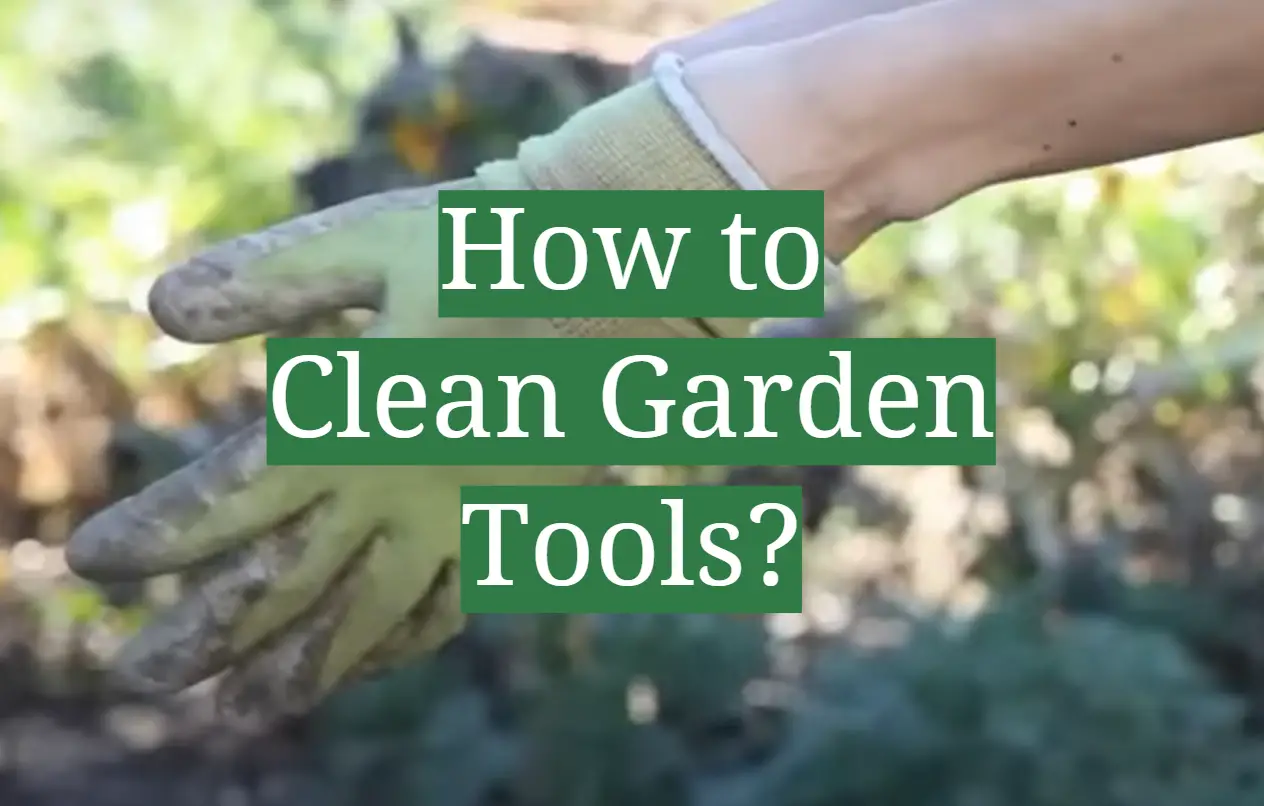




I love spending time in my garden, but I’m not so crazy about having to clean up afterwards. Thankfully, it’s not a difficult task – all you need is a little bit of time and some basic supplies.
The first step is to gather your supplies. You’ll need a bucket or container, water, soap, a brush, and a rag.
Next, fill your bucket with water and add soap. You can use any type of soap – dishwashing liquid, laundry detergent, etc. – but I find that using a degreasing soap works best.
Now it’s time to start cleaning! First, soak the tools in the bucket for a few minutes. This will help loosen any dirt or debris that’s stuck to them.
Then, use the brush to scrub away any remaining dirt or grime. Be sure to pay special attention to the joints and areas that are difficult to reach.
Finally, rinse the tools off with water and dry them with the rag. And that’s it – your tools are now clean and ready for use!
I am always nervous about cleaning my garden tools. I worry that I will not clean them properly and they will rust. But, I have found a way to clean them that works well for me.
First, I soak the tools in a bucket of water. This helps to loosen any dirt or debris that is stuck to the tool. Then, I use a wire brush to scrub off any dirt or residue. Finally, I rinse the tool off with water and let it dry.
I have found that this method cleans my tools well and prevents them from rusting.
I always clean my garden tools after each use. I take a little bit of dish soap and water and scrub them down. I especially make sure to clean the blades of my tools, as any dirt or residue can cause rusting. I then dry them off with a cloth and store them away in my tool shed.
I used to not clean my garden tools as often as I should have, and I would always end up with rusty tools. It was really frustrating, because it would take me longer to clean the tools than it did to actually use them. So, now I am extra diligent about cleaning my tools after each use, and they always stay in good condition.
I absolutely love my garden shears! I use them to cut my flowers and herbs, and they always make the job so much easier. However, after a while they start to get a little dirty. I was wondering if there was a way to clean them without having to take them apart.
I did a little research and found that clorox wipes are actually really good for cleaning garden shears. All you have to do is wipe them down with a cloth soaked in clorox wipes. This will remove all of the dirt and grime, and your shears will be as good as new!
A few years ago, I decided to invest in a garden tool cleaning kit. It was a great decision! Not only does the kit make it easy to clean my tools, but it also helps to protect them from rusting. The kit comes with a wire brush, a scraper, and a can of solvent.
The best way to use the cleaning kit is to start by scraping off any dirt or mud from the tools. Then, use the wire brush to get rid of any built-up gunk. Finally, spray the solvent onto the tools and give them a good scrub.
I’ve found that this process works really well for cleaning my gardening tools. I no longer have to worry about them rusting or becoming covered in dirt and mud. Plus, the cleaning kit is really affordable, so it’s a great investment for any gardener!
I was recently tasked with the job of removing rust from a garden tool. This was a new experience for me, but I was determined to get the job done. After doing some research online, I came up with a plan.
The first step was to gather all of the necessary supplies. I needed some steel wool, vinegar, and a bucket. I also needed to find an area where I could work safely without getting my clothes dirty.
Once I had everything I needed, I got to work. I started by soaking the steel wool in vinegar. Then, I used the steel wool to scrub the rust off of the garden tool. It took a little bit of elbow grease, but eventually the rust came off.
I was glad that I was able to get the rust off of the garden tool without too much trouble. Now it’s ready for use in my garden!
I have been gardening for years and have learned a few tricks along the way. One of the most important is how to clean garden tools. This is especially important if you are like me and often share your tools with others.
The first step is to gather all of your tools. Make sure you have a bucket, some soap, water, and a disinfectant. I like to use a 10% bleach solution.
Next, fill the bucket with enough hot water to cover the tools. Add a few drops of soap and then stir until the soap is dissolved. Add the disinfectant and stir again.
Now it’s time to start cleaning! Submerge the tools in the bucket and let them soak for a few minutes. Then use a brush or sponge to scrub off any dirt or debris. Rinse with clean water and then allow them to air dry.
It’s really that easy! By following these simple steps, you can keep your garden tools in great condition for years to come.
I have a technique that I use to lubricate my garden shears, and it’s really simple. I just take a small amount of vegetable oil and put it on the blades of the shears. This helps to keep them working smoothly and prevents them from rusting. I’ve been using this method for years and it’s always worked well for me.
I have a few old garden tools that I just can’t seem to part with. They’re not in the best condition, but they still have some life left in them. The only problem is that they’re covered in rust. I’ve tried a few methods to remove the rust, but nothing has worked so far.
I read online that you can use white vinegar to remove rust from metal tools. I tried this method and it worked like a charm! I poured white vinegar over the rust spots and let it sit for a few minutes. Then, I used a scrub brush to scrub the rust away. After a few minutes of scrubbing, the rust was gone!
If you have any rusty garden tools, I recommend trying this method. It’s quick, easy, and inexpensive!
Disinfecting garden tools with vinegar is a great way to kill any bacteria or fungus on the tools. I like to use vinegar because it is a natural disinfectant and it is also inexpensive.
To disinfect garden tools with vinegar, you will need:
Vinegar
Garden tools
Water
bucket
First, scrub the garden tools with water and soap to remove any dirt or debris. Then, fill a bucket with water and add enough vinegar to cover the tools. Let the tools soak in the vinegar for about 15 minutes. After soaking, scrub the tools again with water and soap to remove any remaining vinegar. Dry the tools with a towel and store them in a dry place.
When I was a teenager, my mom gave me a job in the garden. I was in charge of weeding, watering, and harvesting the vegetables. My mom also showed me how to clean the garden tools. She said that it’s important to clean the tools after each use so that they will last longer.
She showed me how to use WD-40 to clean the dirt and rust off of the tools. WD-40 is a spray lubricant that can be used on metal surfaces. It works well for cleaning garden tools because it dissolves dirt and grease, and it also protects the metal from corrosion.
After I sprayed the WD-40 on the tools, I used a wire brush to scrub off any remaining dirt or rust. I then rinsed them off with water and dried them with a towel. The tools were then ready for storage.
I have been using WD-40 to clean my garden tools for many years now, and it has always worked well. It’s a great way to keep them clean and free of rust.
I remember my grandpa’s garden tools. They were always so clean and shiny. I always wanted to know how he got them so clean. It must have taken him hours! But, I never asked him because I was afraid he would stop letting me help him in the garden.
Now that I am a grown-up, I know how to clean garden tools. It’s really not that hard at all. In fact, it only takes a few minutes to do. All you need is some warm water, soap, and a brush.
First, use the brush to scrub off any dirt or mud. Then, rinse the tools off with warm water. Finally, soap up the tools and give them a good scrubbing. Make sure to get all of the dirt and grime off of them.
Once they are clean, rinse them off again and allow them to air dry. Once they are dry, they will be shiny and ready to use in the garden!
I have a few rust spots on my shovel that I need to take care of. I usually use a wire brush to take care of any rust on my tools, but I don’t have one at the moment. I could go buy one, but I’m feeling a bit lazy so I’m going to try and use something else.
I remember seeing a video on Facebook where someone used Coca-Cola to clean rust off of tools. I don’t drink Coke, but I do have Pepsi so I’m going to try that.
I pour some Pepsi on the rust spots and let it sit for a few minutes. Then, I use a brush to scrub the rust off. It comes off really easily!
I have always been a bit hesitant to use harsh chemicals on my garden tools. So, when I was told that vinegar is a great way to clean pruning shears, I was interested. I decided to give it a try.
I started by pouring white vinegar into a small bowl. I then placed the pruning shears in the bowl and let them soak for about an hour. After soaking, I scrubbed them with a toothbrush to remove any built-up dirt or sap. Then, I rinsed them off with water and allowed them to dry.
The vinegar worked like a charm! My pruning shears were clean and shiny in no time. And the best part? There was no harsh chemical smell residue left behind.
I remember the first time I disinfected garden tools. I was 5 years old, and my mom had just given me a small trowel for helping her in the garden. I was so excited to use it! But before I could start digging in the dirt, Mom showed me how to clean and disinfect the trowel. She poured a little bleach into a bowl of water, and we both dipped the trowel into the bowl. We scrubbed it with a brush, then rinsed it off under running water. After it was dry, we put it away in our tool shed.
Since then, I’ve always been careful to clean and disinfect my garden tools after each use. It’s not hard to do, and it’s definitely worth the effort. Not only does it help keep your tools in good condition, but it also helps prevent the spread of disease and pests.
So if you’re wondering how to clean garden tools, here are a few simple steps:
1. Pour a little bleach into a bowl of water.
2. Dip your garden tools into the bowl.
3. Scrub them with a brush.
4. Rinse them off under running water.
5. Dry them off with a towel.
6. Store them in a safe place until next time
I never used to think about how to clean garden tools until I started having trouble with rust. It turns out that there’s a really easy way to prevent rust and keep your tools looking new – all you need is some vegetable oil!
I just put a small amount of oil on a cloth and rub it into the metal parts of my tools. It helps to protect them from the elements and keeps them looking good for longer. I’ve been using this method for a few years now and it’s worked great for me.
I have a nice pair of garden shears that I use to snip the ends off my flowers. I love them because they are really sharp and make cutting through the stems really easy. However, the other day I noticed that there was a lot of rust on the blades. I didn’t want the rust to ruin my shears, so I decided to clean them.
The first thing I did was take off the blades. This was really easy to do – they just popped right off. Then I took some sandpaper and started scrubbing away at the rust. It took a little bit of elbow grease, but eventually all of the rust came off.
I put the blades back on and gave them a quick test cut. They still worked like new! Now my garden shears are looking good as new and ready for another season of use.
I have always been pretty terrible at taking care of my tools. I would either forget to clean them after each use, or I would just not take the time to do it properly. This would always lead to rusting, and eventually the tool would just break.
However, after reading about how to clean garden tools properly, I decided to give it a try. And it actually worked! After following the simple steps, my tools stayed in good condition and didn’t rust at all.
So if you’re like me and have had trouble keeping your garden tools in good condition, then try these steps:
1. Clean the tools with a wire brush after each use. This will get rid of any dirt or debris that might cause rusting.
2. Apply a coat of oil to the tools after cleaning. This will help protect them from rusting.
3. Store the tools in a dry place when not in use. This will prevent moisture from building up and causing rusting.
I used to struggle with removing rust from garden tools. It would take me hours to get the job done and my tools would always look worse for wear. But then I discovered a simple solution that made the process a lot easier.
All you need is some white vinegar and a bucket. Soak your tools in the vinegar for about an hour, then rinse them off with water. The vinegar will help break down the rust, making it easy to scrub off.
This process has worked really well for me, and my garden tools look like new again!